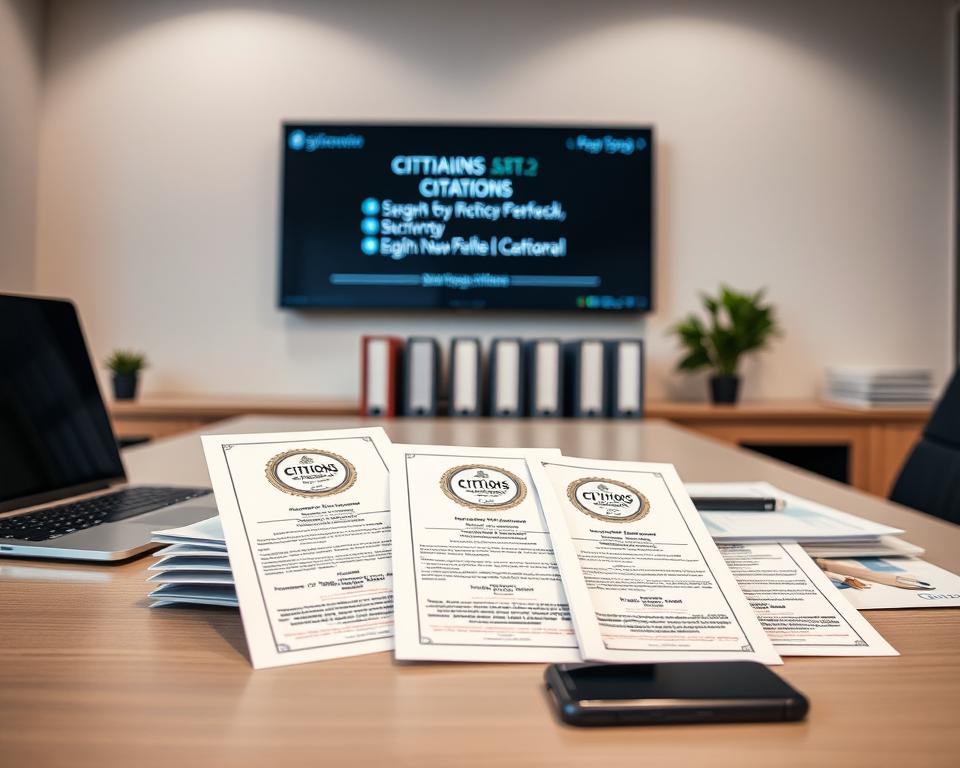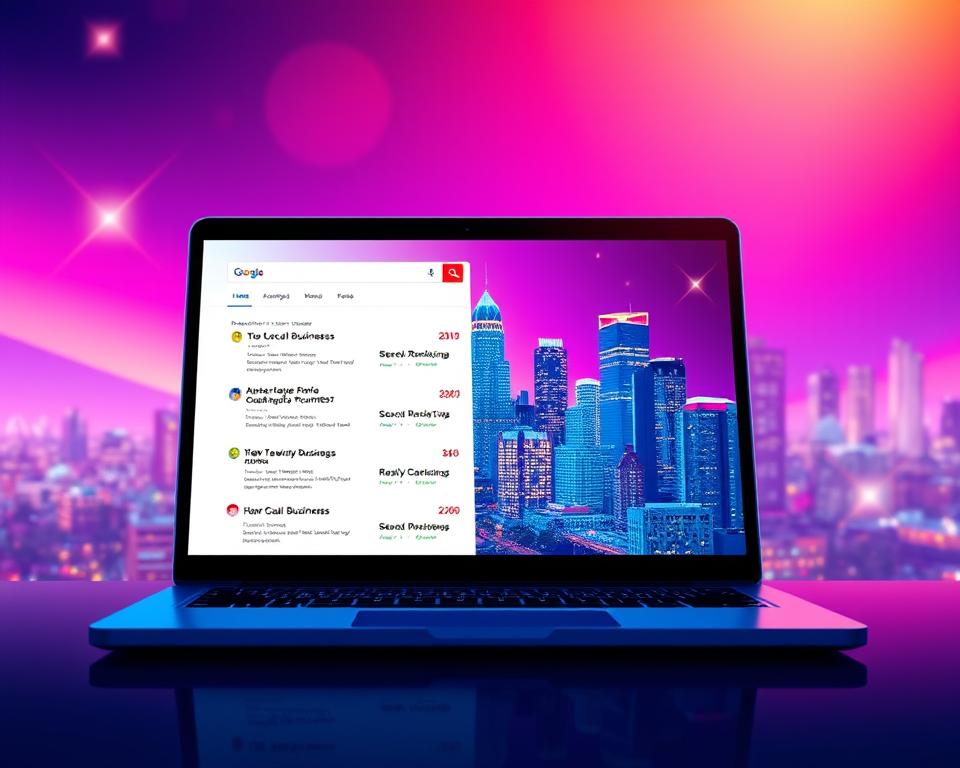Marketing1on1: Regional SEO Professionals – Expand Your Enterprise
Have you realized 78% of handheld users check out a establishment within 24 hours after finding it in local search results? That’s the power of dominating local search—precisely what Marketing1on1 assists companies in accomplishing.
Marketing1on1 is a top-rated agency dedicated to amplifying exposure on Google Search and Maps. Their strategies ensure businesses appear when customers search for services nearby. Boasting more than two decades of expertise, they have supported hundreds of clients in expanding via customized approaches – local SEO Los Angeles.
Google prioritizes localized results, particularly for searches including “near me”. Marketing1on1’s proficiency guarantees your establishment distinguishes itself, driving foot traffic and online conversions. Their proven methods include optimizing Google My Business, managing directories, and tracking performance metrics.
Key Observations
- 78% of smartphone searches culminate in face-to-face visits within one day.
- Marketing1on1 focuses on enhancing search placements for companies.
- Google emphasizes local outcomes for service-related searches.
- 28% of local searches result in immediate purchases.
- Their interface synchronizes with top systems for effortless administration.
Understanding Local SEO and Its Importance
92% of shoppers pick businesses from the first page—where does yours rank? Focused optimization confirms that your outlet, practice, or bistro surfaces when nearby users look. In contrast to conventional methods, it zeroes in on closeness, Google Business Profiles, and community directories.

Understanding Hyper-Focused Optimization
This approach zeroes in on municipal or regional exposure. For instance, a wedding boutique in Charlotte experienced a 130% surge in visits through local query optimization. Major distinctions compared to wider strategies:
- Closeness: Google emphasizes establishments in immediate vicinity.
- Citations: Consistent listings on Yelp or Yellow Pages build trust.
- Ratings: 81% of consumers check ratings before visiting.
The Impact of Local Search on Your Revenue
Eateries leveraging these approaches experienced a 100% increase in footfall. For what reason? 800 million monthly “near me” searches in the U.S. create endless opportunities. Google ranks businesses based on:
- Relevance: The degree to which your offerings align with the query.
- Distance: The spatial gap between your business and the user.
- Visibility: Web standing and external link endorsements.
This is further boosted by voice search—71% prefer natural-language queries like “best pizza near me.” Tailoring for these behaviors ensures you remain competitive.
Local SEO Unveiled: Fundamental Mechanics
The search engine algorithm focuses on three crucial components for regional searches. These ranking factors—relevance, distance, and prominence—determine who appears in the coveted map pack. Master these, and your company transforms into the preferred option for local patrons.
Clarifying Google’s Community Ranking Elements
This is the method by which Google evaluates: 55% relevance, 30% proximity, and 15% prominence. Suitability denotes aligning your services with the query. An artisan bakery refining for “gluten-free cupcakes” will achieve a higher ranking for that specific search.
Proximity matters too. When two establishments provide comparable offerings, the nearer one generally prevails. Visibility relies on reputation—consider testimonials, references, and digital authority. A top-rated Google Business Profile featuring over 100 reviews surpasses the competition.
Differences Between Local and Traditional SEO
Precision-targeted optimization centers on map prominence and uniform NAP details. Traditional methods prioritize backlinks and broad keywords. Such as, OHSO Brewery raised traffic by 130% by refining every location’s profile independently.
- Customized Outcomes: The map pack updates within a 1-mile radius.
- Mobile-Optimized: 72% of consumers access shops within a 5-mile range.
- Instruments: Resources like Local Falcon trace rankings at the block level.
The Influence of Google Business Profile on Local Positions
An optimized Google Business Profile may increase visits by 70%—is yours fully optimized? Accurate profiles receive 50% more buying interest. This complimentary resource acts as your virtual storefront for nearby clients.
Optimizing Your Profile for Peak Visibility
Begin by confirming your details. Google confirms your business’s address via mail or phone. Skipping this procedure renders your profile invisible in searches. Fill every field:
- Classifications: Primary and secondary category picks impact 43% of rankings. Choose wisely.
- Visuals: 10+ high-quality images lift conversions by 35%. Display offerings, team members, and premises.
- Hours: Precise schedules avoid customer irritation and ranking drawbacks.
Optimizing Every Section for Better Performance
Frequent updates ensure your profile remains on par. Organize posts with resources like Semrush Social to spotlight offers. Reflect competitor service terms to boost relevance.
Elements like “outdoor seating” or “free Wi-Fi” sort your company for specific searches. Link your profile to location-specific landing pages—not your homepage—for higher conversions.
Answer feedback within 48 hours. Customer engagement boosts your standing in Google’s algorithm. A top-rated profile with over 100 reviews outperforms unresponsive competitors.
Excelling in Community Keyword Discovery
Identifying the proper keywords can determine your digital presence. For businesses targeting nearby customers, terms like near me or in [city] drive 46% of all searches. Tools like SEMrush and Google Keyword Planner help uncover these high-intent phrases.
Instruments to Identify High-Conversion Local Keywords
Start with competitor analysis. The SEMrush Keyword Gap instrument highlights weaknesses in your plan. As an example, an HVAC business observed that targeting “24-hour AC repair Phoenix” resulted in 3x higher conversion rates than broad terms.
Yelp Suggest extracts lesser-known searches like open now Mexican restaurants downtown. Geo-grid tools like Local Falcon pinpoint underperforming areas. Voice search adaptation is crucial too—71% of users request services in a conversational manner.
Comparing Long-Tail and Short-Tail Terms for Local SEO
Longer keyword phrases (4+ words) represent 62% of searches. They’re specific, like best gluten-free bakery Brooklyn. Short-tail terms (bakery near me) cast a wider net but attract less qualified traffic.
Prioritize modifiers: in [city] signals planning, while near me indicates urgency. A coffee shop targeting best latte Williamsburg saw a 35% traffic boost by refining its keyword mix.
NAP Citations: Building Trust with Consistency
Consistent business details online build credibility—just like a well-kept storefront. Your business name, phone number, and address (NAP) should remain consistent on all platforms. Minor mismatches disorient customers and impair rankings.
Top Directories for Local Business Listings
Kick off with key directories: Google Business Profile, Apple Maps, and Yelp. Specialized directories (e.g., ZocDoc for health services) provide focused visibility. One plumbing firm experienced a 40% increase in conversions post-listing corrections.
Data aggregators such as Data Axle distribute your NAP details to various smaller platforms. Ensure accuracy here to avoid widespread errors. Hint: Collaborate with your Chamber of Commerce to secure credible backlinks.
Identifying and Repairing Citation Inconsistencies
Employ SEMrush Listing Management to detect errors. Unify repeated listings—e.g., two Yelp profiles for one venue. Comply with these NAP standards:
- Exact match: “Ave” vs. “Avenue” breaks consistency.
- Style: (555) 123-4567 vs. 5551234567 perplex search algorithms.
- Revisions: Change your phone number? Edit every listing simultaneously.
Develop a branding manual for franchises to ensure consistency. Tools like BrightLocal track corrections in real time.
On-Page Optimization Tactics for Local Companies
Looking to attract additional local clientele? Optimizing your website’s on-page elements can make all the difference. Enterprises possessing geo-targeted pages enjoy a 78% ranking boost—demonstrating that minor adjustments lead to major outcomes.
Creating Engaging Title Tags and Meta Descriptions
Your title tag functions as a virtual shop sign. Business Name + Value Proposition”. For instance, “Emergency Plumbing in Austin .
Meta descriptions should include geo-modifiers. “Best organic café in Portland” outperforms bland expressions. Keep both under 60 characters to avoid truncation.
Creating High-Converting Local Landing Pages
Custom pages for every region enhance pertinence. Feature integrated maps, team biographies, and local client testimonials. A roofing company tripled leads by adding neighborhood-specific case studies.
Use LocalBusiness schema markup with geo-coordinates to help search engines display your address and hours directly in results.
- Centralized linking structure: Connect all location pages to a central services page.
- Mobile-optimized layout: 53% of searches abandon non-mobile-friendly sites.
- New content: Update neighborhood guides seasonally.
The Role of Online Reviews in Local SEO
93% of buyers read testimonials prior to selecting a company—what about yours? Customer feedback builds credibility, and search engines favor profiles with up-to-date, comprehensive reviews. Indeed, review sentiment influences 17% of your search visibility.
Straightforward Tactics to Prompt Positive Customer Feedback
Ensure review submission is simple. Set up QR codes at the register or send SMS links post-service. Marketing1on1’s tracked shortcuts boost participation by 40%.
- Train staff: A swift inquiry following a transaction drives more feedback.
- Leverage social media: Instagram Story features directly link to review portals.
- Prompt timing is key: Solicit feedback within 24 hours post-service.
Dealing with Negative Testimonials Effectively
One negative review can discourage 30 potential buyers. Address quickly by following the AAA technique: Acknowledge, Apologize, Act. Take heated discussions offline with a “Let’s fix this—please email us” approach.
Instruments like Semrush inform you about incoming feedback. A dental clinic using this system saw bookings rise 25% by addressing concerns publicly.
Insider tip: Feature your best testimonials on relevant pages. Social proof stacks credibility and nudges visitors to contribute their own.
Link Building for Local Domination
Links impact roughly 30% of your search presence—are you securing the proper ones? High-quality backlinks signal trust to search engines, pushing your business ahead of competitors. Below is a methodical approach to secure them.
Local Sponsorships and Community Backlinks
Support a youth sports team or charitable 5K event. Such collaborations typically feature backlinks on event pages. An HVAC company gained 42 authoritative links by partnering with a food bank—proof that goodwill pays off.
Focus on directories such as Chamber of Commerce listings. Such directories commonly provide dofollow link opportunities. Expert tip: Assemble media kits for outreach to facilitate journalist features of your enterprise.
Reclaiming Lost Links and Unlinked Mentions
Leverage Ahrefs Content Explorer to detect unlinked business mentions. Contact them courteously: “Thanks for mentioning us! Would you mind linking to our website?” This approach helped a bakery reclaim over 15 backlinks.
HARO (Help a Reporter Out) allows proprietors to establish expertise. Provide responses enriched with local perspectives. One plumber landed a Forbes link by sharing neighborhood-specific tips.
- Broken link building: Find expired partnerships of competitors. Suggest your link as a substitute.
- Schema markup: Add LocalBusiness tags to help search engines connect mentions to your profile.
- Community Boards: Participate in regional forums (such as Nextdoor) offering helpful commentary—profiles typically carry links.
Local Optimization for Businesses with Multiple Locations
Expanding to multiple locations? Your website must adopt a unique method for each location. Generic strategies won’t cut it—Google rewards businesses that customize their online presence for every location.
Overseeing Unique Profiles per Area
Develop individual Google Business Profiles for every business location. OHSO Brewery saw a 130% traffic boost by optimizing each brewery’s profile individually. Key steps:
- Individual landing pages: Highlight personnel profiles, local happenings, and neighborhood visuals.
- Centralized control: Employ systems such as Google Business Profile Manager to adjust schedules or offerings simultaneously across every location.
- Product tags: Showcase location-tailored products (e.g., “Available at our Phoenix branch”).
Preventing Duplicate Content Issues
Identical service descriptions hurt rankings. Rather, employ urban-specific content sections. One spa chain increased organic visits by 140% by incorporating neighborhood guides into each page.
For similar pages, use canonical tags or noindex meta directives. Illustratively, “Plumbing Services in Phoenix” and “Plumbing Services in Tempe” need distinctions beyond the city title.
The Influence of Voice Search on Community SEO
The evolution of voice search is reshaping how users discover businesses—are you set? Since 71% of users choose spoken questions, tailoring for natural language is imperative. Phrases such as “open now” surged by 400% with voice assistants like Alexa transforming search behavior.
Refining for “Near Me” and Dialogue-Based Searches
Voice searches use full questions, not keywords. Instead of “best pizza,” users ask “Who has the best gluten-free pizza near me?” Customize your content to respond to these queries:
- Question-and-Answer pages: Respond to “what’s” and “where’s” inquiries using brief answers.
- Data Structuring: Apply SpeakableSchema so devices can vocalize your responses.
- Position zero: Target the zero position—voice devices extract information from here.
One New York pizzeria elevated voice orders by 65% via FAQ schema adoption. Their “delivery radius” area addressed the primary voice search question.
Expert Advice for Mastering Voice Search
Control your Google Knowledge Panel. Verify business details to ensure accuracy across devices. Optimize for Alexa and Echo by claiming your Yelp profile—these platforms prioritize it for local results.
Mobile matters too. 25% of vocal searches are conducted on mobile devices. Guarantee that your site loads rapidly and includes easy-to-find contact buttons.
Tracking Your Local SEO Performance
Do you track the metrics that really impact your online presence? Consistent tracking confirms that your actions yield tangible outcomes. Prioritize data that illustrates how clients discover and connect with your business.
Vital Measurements to Keep an Eye On
Begin by examining your map pack rank. Appearing in the top three search results boosts clicks by 60%. Monitor “near me” positions—since they propel immediate visits.
The pace of receiving reviews is also important. Profiles with 5+ new monthly reviews grow faster. Employ Google Search Console to segment data by location. It reveals where you excel or require improvement.
Instruments for Live Position Monitoring
SEMrush’s Position Tracking identifies performance at the ZIP code scale. Contrast it with Local Falcon’s heatmaps for granular, block-level analysis. One retail outlet enhanced its CTR by 33% with this technique.
Tag Google Profile clicks with UTM parameters. It shows which profiles drive the highest conversions. Continuously track at least three competitors—as their strategies influence your rankings.
Monthly reports should be clear and actionable. Highlight ranking trends and tie them to conversions. Modify your tactics in response to the observed data.
Expert Local Optimization Advice from Marketing1on1
Marketing1on1’s tested methods elevate your business presence significantly. Statistics reveal that sites with schema enhancements receive 30% additional clicks—demonstrating that technical adjustments yield genuine outcomes. These next-level strategies extend past elementary tweaks to rule search rankings throughout the year.
Exploiting Structured Data for Community Listings
Structured data helps search engines understand your business details. LocalBusiness structured data encompasses pricing, geographic coordinates, and operating times. One landscaper leveraging schema overtook competitors in “spring cleanup” queries via rich snippets.
Resources such as Google’s Structured Data Markup Helper simplify the process. Concentrate on these components:
- Service areas: Specify your service radius for mobile queries
- Event markup: Feature workshops and seasonal deals
- Testimonial markup: Show star ratings directly in results
Timely Tactics for Enhanced Exposure
Timing matters—88% of searches for services happen on mobile during peak seasons. Design “Back-to-School” promotions or festive specials with geo-targeted pages. Marketing1on1 recommends this Google Posts mix:
- 40% sales (time-limited promotions)
- 30% community news (local event partnerships)
- 30% informative posts (seasonal advice)
Local micro-influencers with concentrated audiences extend reach. A bakery partnered with neighborhood food bloggers, increasing foot traffic by 25%. Ensure holiday hours are posted in advance—exclusive Google Business Profile updates mitigate customer inconvenience.
Insider tip: Create a quarterly plan for geo-focused content. Coordinate your website visuals with GBP updates to maintain a unified message.
Typical Local Optimization Pitfalls to Prevent
Even trivial mistakes can dramatically impact your online presence. Slight missteps—such as mismatched contact information or a laggy website—can drive prospective customers to rivals. Here’s how to sidestep the top pitfalls.
Non-Uniform NAP Data Across Listings
Your business name, address, and phone number (NAP) should be identical across all platforms. A minor mistake (e.g., “Ave” compared to “Avenue”) can result in a 37% drop in search rankings. Illustratively, a restaurant saw a 22% reduction in visits after Yelp displayed an old address.
- Combine duplicate profiles (like two Google My Business listings).
- Revise data on aggregators such as Data Axle to fix common mistakes.
- Audit quarterly with Yext to maintain accuracy.
Ignoring Mobile Optimization for Local Searches
53% of mobile users bounce if a site loads slowly. Given that 76% of local queries occur on mobile, your website must:
- Mobile-responsive layout (eliminating the need to pinch).
- Click-to-call buttons above the fold.
- Lightweight images (less than 1MB).
Insider note: Test mobile speed with Google’s PageSpeed Insights. Even a 1-second lag may reduce conversions by 7%.
Tools to Enhance and Expedite Your Local Optimization
Suitable instruments can convert search visibility challenges into opportunities. Whether you’re a small business or a multi-location brand, the right stack saves time and amplifies results. Below are tips for making a smart selection.
Complimentary Tools for Small Enterprises
Start with Google Business Profile. It’s the foundation for managing your online presence. Supplement it using:
- Keyword Planner by Google: Uncover high-intent phrases like “24-hour plumber near me”.
- AnswerThePublic: Map out voice-based queries (such as “Where’s the nearest ATM?”).
- Google Analytics: Monitor which local areas generate the highest traffic.
These tools require no budget but deliver actionable insights.
Advanced Tools for Large-Scale SEO Campaigns
Larger operations need robust platforms. SEMrush Local ($50/month per location) offers rank tracking and listing management. Consider leading alternatives:
- Yext: Automatically corrects listings in over 150 directories.
- Uberall service: A 40-site brand conserved 300 hours per month using its unified dashboard.
- Local Falcon tool: Monitors search positions at the block level for precise tweaks.
Pro tip: Combine SEMrush’s keyword data with Local Falcon’s geo-grid reports for complete visibility. Resources like BrightLocal cater to mid-sized brands at $39/month.
Real-World Examples of Community SEO Triumphs
Empirical evidence shows targeted methods can transform search visibility—here are success stories from various enterprises. They underscore how intelligent optimizations can increase revenue.
A Dining Establishment’s Transformation from Sparse to Bustling
An Austin-based Mexican eatery experienced a 112% surge in visits by refining its Google Business Profile and menu sections. Key tactics:
- Incorporated geo-referenced photos of offerings like “breakfast tacos near downtown”.
- Replied to all reviews within 4 hours, boosting overall sentiment by 40%.
- Used SEMrush to target “happy hour specials Austin” — ranked #1 in 3 weeks.
Service Experts Achieving Search Supremacy
An HVAC company cracked page one for 38 “emergency repair” keywords. Their strategy:
- Developed geo-targeted landing pages (such as “AC repair in Phoenix”).
- Garnered links from community news outlets through storm readiness advice.
- Ran a “free maintenance check” Google Posts campaign—calls rose 30%.
Pro tip: A law firm client of Marketing1on1 secured 80 leads/month through the integration of local blogging and citation corrections. Brands operating in several locations witnessed 140% organic growth over a six-month period employing these methods.
Conclusion
Building a strong online presence takes strategy—not shortcuts. Marketing1on1 helps your business dominate nearby searches by optimizing Google Business Profiles, managing citations, and leveraging reviews. This sustained approach over 6–12 months transforms searches into devoted customers.
92% of local queries culminate in conversions within 48 hours. Avoid quick-fix schemes—consistent tracking and quarterly reviews sustain growth. Initiate immediately: Obtain your free audit via Marketing1on1 and fine-tune your profile for prompt effect.
Pro tip: Consistent rank monitoring and new content keep you at the forefront. Command the essentials, and see your visibility escalate.


